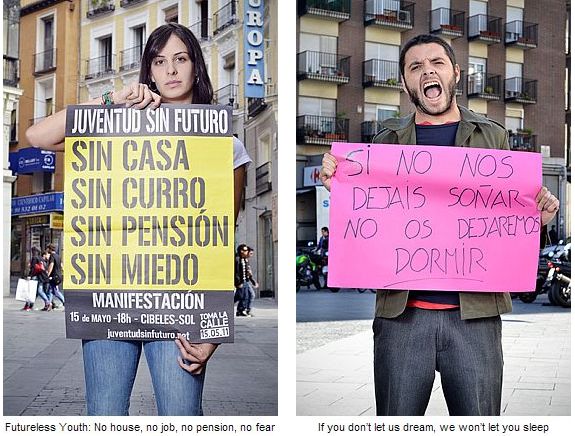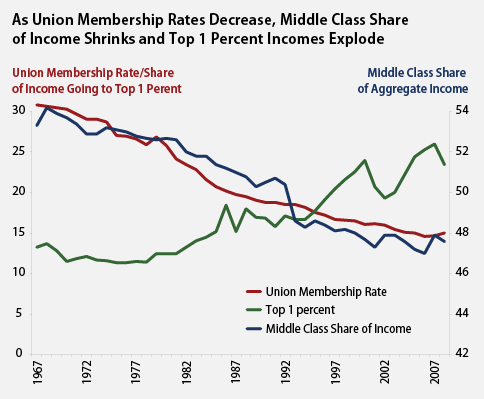If Tahrir Square inspires the Occupy movement, police forces across America appear to think the most useful lessons on handling popular unrest come from Pearl Roundabout, Bahrain. That means that when ordinary American citizens take a stand and symbolically proclaim: this is our land, the police will sooner or later respond with violence in order to assert the power of the state.
From that perspective, the lesson from Bahrain earlier this year was clear: all necessary force must be used in order to prevent protesters retaining their hold on an occupied public space.
This is being done in the name of public order, yet it appears to be a thinly veiled effort to crush political dissent — even while politicians voice sympathy with the concerns of the protesters. (Let’s not forget that the Bahraini royal family also knew how to make timely PR statements.)
Tools designed to quell riots and provide “non-lethal” means to rein in violent protests — tear gas, pepper spray, batons, and stun grenades — are now being used to suppress non-violent political protest.
This is how the Oakland police decided to assert state power yesterday afternoon and evening:
Tim at Occupy Oakland writes: Around 2am word spread that riot police were massing in around the area where Occupy Oakland has been for more than two weeks. Hundreds of people gathered and began to make non-violent barricades at all the entrances to the plaza.
At about 4:30am, riot police appeared on all corners of the encampment. There were roughly 500 to 700 riot police in total.
The entire plaza was completely barricaded on all sides, with palates, trash cans, chairs, a gigantic christmas wreath, police barricades from a neighboring street
Occupiers began chanting ‘go home’ as they always do when police show up at Occupy Oakland, but it quickly became clear that there was an overwhelming number of police from at least four different jurisdictions.
As people continued to chant and fell back within the barricade, off of the street, the police announced that we would be arrested within the encampment. They said [they’d use force to disperse demonstrators within] five minutes, and within a minute they fired the first rounds of flash-bang grenades and rubber bullets, and then tear gas into the camp, hitting and injuring multiple people. [Continue reading and see photos…]
San Francisco Chronicle reports: Police fired tear gas at least five times Tuesday night into a crowd of several hundred protesters backing the Occupy movement who unsuccessfully tried to retake an encampment outside Oakland City Hall that officers had cleared away more than 12 hours earlier.
Police gave repeated warnings to protesters to disperse from the entrance to Frank Ogawa Plaza at 14th Street and Broadway before firing several tear gas canisters into the crowd at about 7:45 p.m. Police had announced over a loudspeaker that those who refused to leave could be targeted by “chemical agents.”
Protesters scattered in both directions on Broadway as the tear gas canisters and several flash-bang grenades went off. Regrouping, protesters tried to help one another and offered each other eye drops.
One wounded woman, who others said had been hit by one of the canisters, was carried away by two protesters.
One protester, 35-year-old Jerry Smith, said a tear gas canister had rolled to his feet and sprayed him in the face.
“I got the feeling they meant business, but people were not going to be intimidated,” Smith said. “We can do this peacefully, but still not back down.”
Police forcibly dispersed the crowd with tear gas again about 9:30 p.m., when protesters began throwing objects at them. As protesters scattered, police closed off Broadway between 13th and 16th streets.
Minutes later, protesters regrouped at the 15th Street entrance to the plaza. Protesters began throwing objects again. Police responded by firing more tear gas canisters.
The protesters were trying to make good on a vow to retake an encampment that Occupy Oakland activists had inhabited for 15 days, until police evicted them early Tuesday.
The evening protest started around 5 p.m., when about 400 people began marching from the main library at 14th and Madison streets toward the plaza, which police had barricaded and city officials had declared would be closed for at least several days.
“We’re going to march and reclaim what was already ours, what we call Oscar Grant Plaza and what they call City Hall,” said protester Krystof Lopaur, referring to the unarmed man shot to death by a BART police officer in January 2009.


